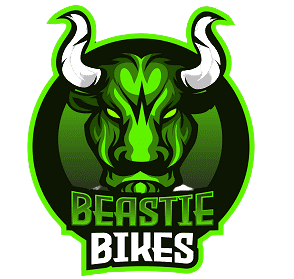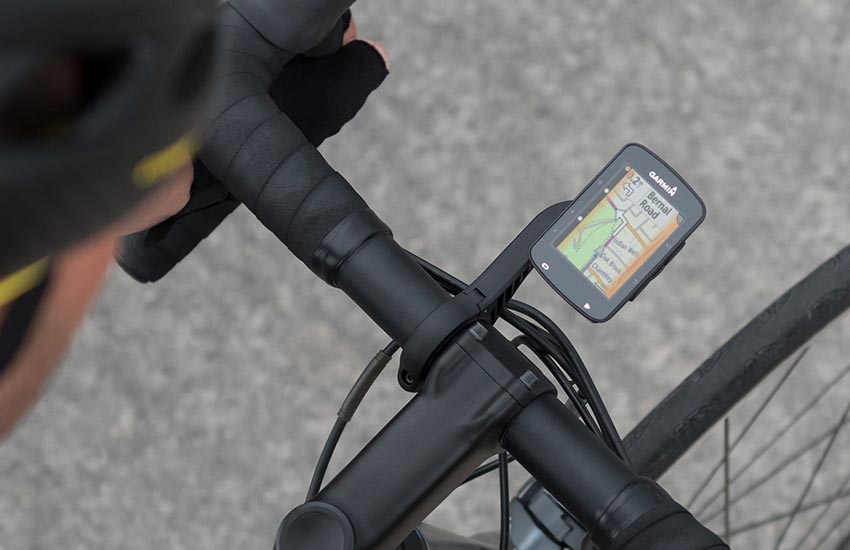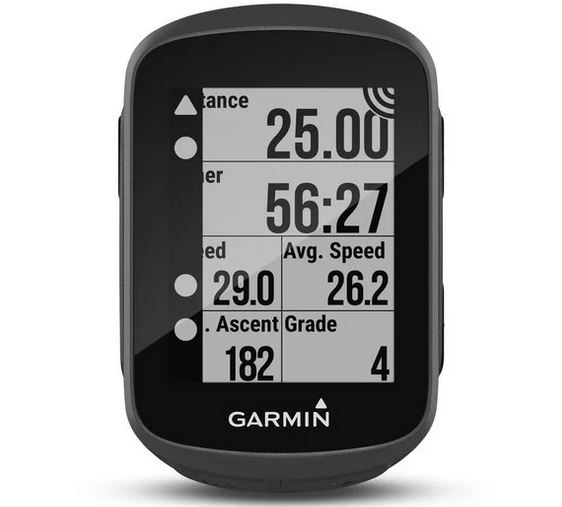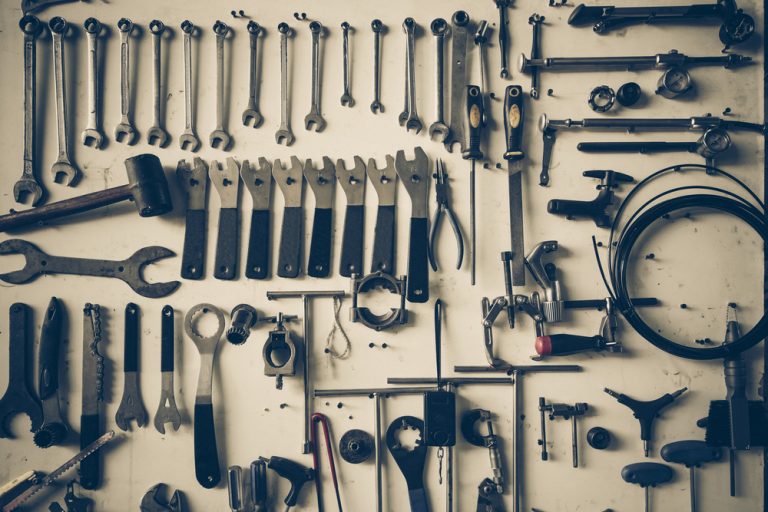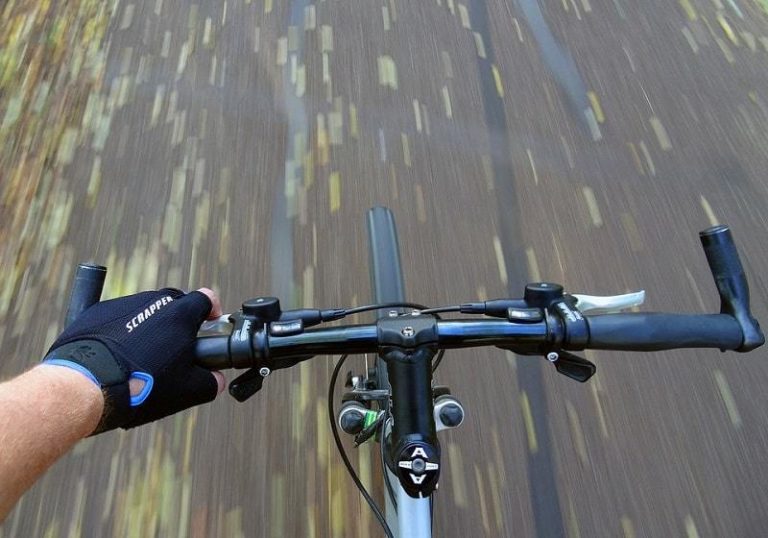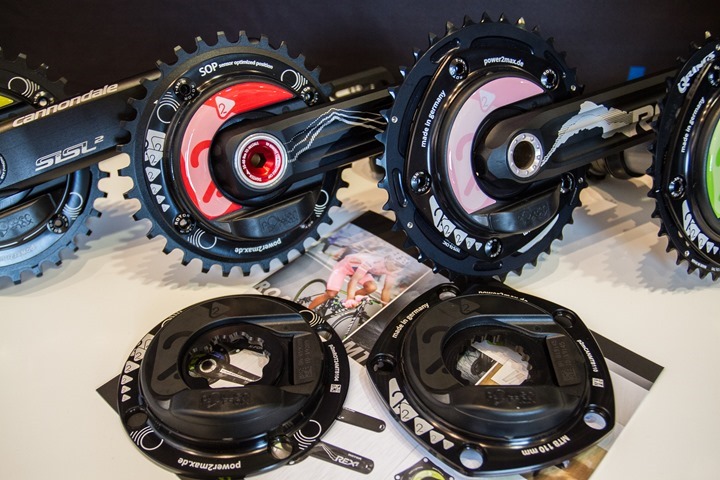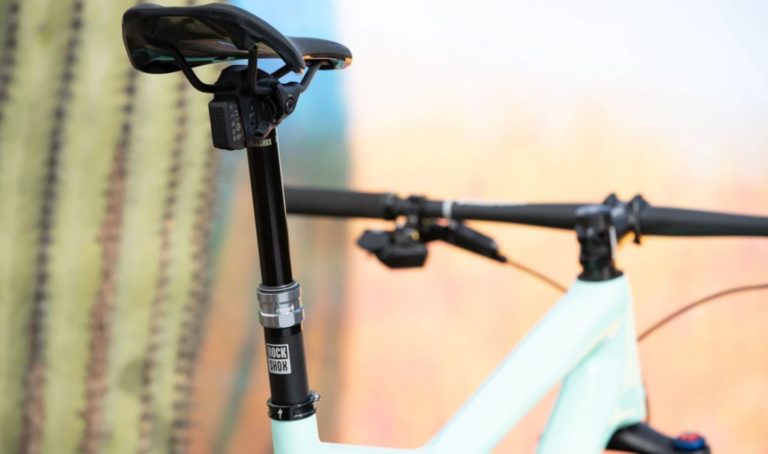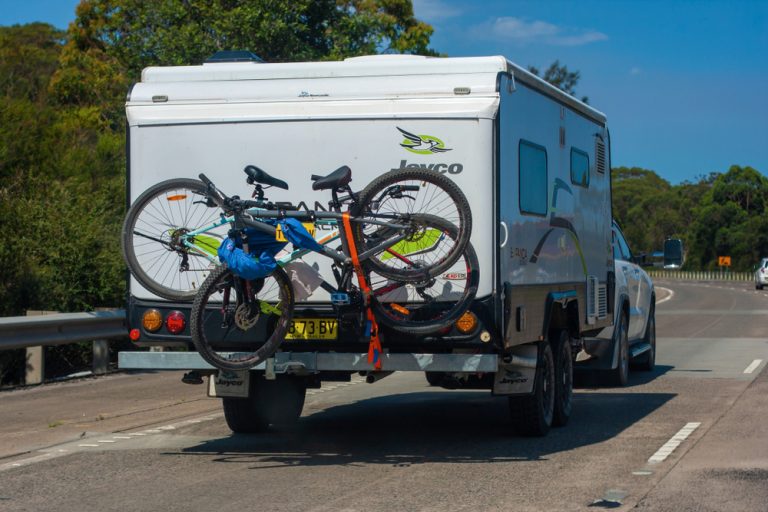GPS Bike Computers – The Best For Road, Mountain Biking, Enduro & More
A GPS cycling computer uses a satellite to monitor your location and precisely calculate speed, time, cadence, range, and distance. What is even better is that they do not use any magnets or wires. The various brands monitor your path, as well as data such as power, heart rate, and cadence, which you can further add to ride-logging services to assess your level of performance for training or fun.
What Is the Best GPS Computer?
Colour displays make it simpler and more convenient to navigate by making specific points of interest and streets more visible. Colour may also be used to draw attention to certain aspects of training, such as power zones, range, and heart rate.
In general, the more graphic functions brands offer, the more helpful colour is. Monochromatic screens are sufficient and simpler to read in certain conditions, such as if you are just utilizing the device to read numbers. These numbers may include elevation, distance, speed, and time. A touchscreen can make certain functions and the setup easier—specifically navigation—but they can be problematic when used while wearing gloves or when wet from rain or sweat. Touchscreens and cycling do not match well in general, so you should try to avoid this at all costs.
When you purchase one of the best bike GPS cycling computers, you are usually not only investing in the device, but also into the ecosystem of the company or brand. It is not only about whether the Garmin Edge 530 is superior to the Dash M50; you also have to think about whether you prefer the Garmin Connect smartphone app and web portal to the features on the Stages Link device—a consideration that can be more nerve-wracking than picking a device itself. Hammerhead has an extension for Chrome that allows you to easily import routes from websites such as Strava, Ride With GPS, Garmin Connect, and various others.
All of these bike computers and brands save and display simple ride information. Although the majority of these units can provide basic turn assistance, only the highest-end or best bike computers can provide complete navigation features including detailed turning directions, charts, points of interest, street names and numbers, elevation data, and address databases that can be viewed on the system.
You are unlikely to use these functions on daily rides around town. They are only useful if you intend on going on journeys in far-flung and unfamiliar places. Therefore, before you spend $600 or more on a fully-featured mapping and navigation device such as the Edge 1030, think about how much flexibility you require.
For each device, a claimed battery life is mentioned. In reality, these can be overly ambitious, and they normally entail restricting the functionality and brightness of the screen. Many variables affect battery life, including the recording interval, screen brightness, sensors, mobile link, air temperature, satellite connections, and also what is displayed on the screen.
A continuously refreshing colour screen map consumes more battery life than simply showing the present time in white characters on a blank screen. On one charge, most of these bike computers can last a few days of afternoon rides, an incredible backcountry journey, or a century. While you cannot take these claimed time limits as the gospel, you can use them as a guideline for comparing the battery life of several bike computers.
What Features Should You Look for in the Best Bike Computers?
You should try to make sure that your GPS unit has the following features:
- Smartphone connectivity
- Sensor compatibility
- Navigation and maps
- Strava live segments
Smartphone Connectivity
Various cycling computers use Bluetooth to connect to your mobile phone. This function works in conjunction with companion apps to simplify customization and setup. Certain cycling computers may also send calls and post updates to the bike computer, so you do not have to take your cell phone out during the ride to check who is calling.
Sensor Compatibility
ANT is the most commonly used cycling sensor communication protocol at the moment (speed, heart rate, cadence, power, etc.); however, Bluetooth is gaining traction. Certain cycling computers only connect to one of the two options, while others link to both. It is recommended to have a device with both because it gives you a wider range of choices when it comes to adding or replacing sensors.
However, just because a device has ANT and Bluetooth capability does not mean it can communicate with all ANT or Bluetooth detectors. Make sure your device is set up to connect to the sensors you would like to use by enabling the appropriate protocols.
Navigation and Maps
Specific GPS cycle computers offer turn-by-turn directions and on-screen maps. If you want to try out different routes, you may need a device with complete navigation features and the ability to import routes from alternative applications. If you do not have maps, you are going to find yourself in an extremely difficult position.
Strava Live Segments
If you want to beat a friend or family members' time, the Strava live segments feature shows you where a segment begins and ends, as well as offers mid-segment status concerning your personal record or closest competitor. Unfortunately, this characteristic is not available on every device.
What Are the Best Bike Computers on the Market?
If you are considering investing in a GPS bike computer, you can have a look at the following:
- Garmin Edge 130
- Garmin Edge 530
- Garmin Edge 1030
- Hammerhead Karoo
- MSW Miniac 322
- SRM PC8
- Stages Dash M50
- Wahoo ELEMNT Bolt
- Wahoo ELEMNT Roam
Garmin Edge 130
Garmin now has a worthy successor to the iconic, retired Edge 500 in the Edge 130. The Edge 130 is a compact, thin, and affordable GPS computer with a simplified feature set, monochromatic screen, phone alerts, and good battery life. It has all of the characteristics a serious rider requires, including cadence, distance, speed, and time. There is also a barometric altimeter and comprehensive sensor compatibility, which includes superior battery life, power meters, and reliability, without the added complexity and cost of high-end characteristics such as mapping.
This ANT and Bluetooth smart option, alongside the Edge 530, are fantastic options for bikes.
Garmin Edge 530
The Edge 530 is one of Garmin's best bike computer options and one of the greatest you are going to find on the market in AU. It contains just about every feature you can think of, and it is dependable and simple to use for the most part. The 530 is small and thin, with long battery life, a large, focused, and bright colour screen, and a slew of functions. It can connect to almost anything, including ANT and Bluetooth Smart sensors, Wi-Fi, and a phone.
The GPS can be customized with third-party applications, data fields, and widgets. Climbpro is a beneficial feature included, which informs you about upcoming climbs and shows you the remaining pitch and distance. Endurance and strength athletes find that when they link the Garmin Charge Power Pack, they can double the run time of the Edge 530.
Garmin Edge 1030
For bike computers inclusive of navigation and maps, the Garmin Edge 1030 is one of the best options. It comes preloaded with complete navigation and mapping capabilities, including points of interest and address search so you may navigate and redirect directly from the interface.
The large colour screen makes it simpler to navigate an unfamiliar path in Australia. Despite the bigger size, the 1030 is lightweight, and the provided out-in-front mount keeps it level with the bar. The size of the 1030's screen and advantageous navigation qualities and performance are the main selling points; otherwise, it is extremely similar to the lighter and smaller Edge 830.
Strava, Climbpro, live monitoring, phone alerts, and a variety of other fitness and training data points are all included. The integrated battery lasts approximately 20 hours, but with the Garmin Charge Power Pack, you can receive up to approximately 44 hours of battery life. Additionally, the tool tracks the basic performance essentials like cadence, pace, altitude, time, power range, speed, and distance just as good as any GPS computer for bikes.
Hammerhead Karoo
The Karoo from Hammerhead is a smartphone that you can use as a bike computer. It has a sim-card port for adding a data plan for cellular communication, and it works on the Android operating system. It is also massive and by far the heaviest machine on this list for bikes. The screen is similar to that of smartphones and far superior to various devices. This Karoo also appears faster than any other tool: redirection and satellite lock are lightning-fast and navigating the menu or various settings is simple and straightforward. However, these GPS bike computers do take slightly longer than some others to charge.
The unit has an incredible touch screen for a cycling computer. These GPS computers function with thick winter gloves, and you can use the buttons to navigate through websites, access the menu, and begin and end the trip. However, considering how stunning the screen size is and how sophisticated it appears to be, it does miss a few key performance features.
The Karoo does not connect to a mobile via Bluetooth (though it can connect to your cell phone's Wi-Fi hotspot). It does not have Strava or workouts and you cannot search for and navigate to a point of interest on the bike computer. You can find locations via an address if the GPS computers have a SIM card and internet access or are connected to Wi-Fi.
Riders may have an issue with the fact that this item does not have a speaker to notify you about upcoming directions or give you alerts when paired to a Garmin Rearview Radar. If you do have this item, you can connect it to Bluetooth headphones and speakers for audio output.
MSW Miniac 322
This tiny bike computer is about as simple as they come. It only displays and records time, speed, elevation, cadence, and distance. The ride saves to the computer, but wireless uploads are not available: You can attach the Miniac to a PC via a USB cable as an external drive, locate the specific file for the trip, and manually download it to your preferred page.
Since this is a light and small bike tool, the screen size is comparatively tiny, with a resolution that is similar to that of old digital watches. The basic Miniac is not much, but it has an affordable price range, is simple to use, offers essential ride metrics, and allows you to engage in competitions against any friends and family on Strava.
SRM PC8
On paper, the SRM Power Control Eight or PC8 cannot compete with other GPS computers for bikes, despite the astronomical price. It lacks navigation and many of the recovery and training features found on other items. Additionally, some of the operations and characteristics are simplistic and sluggish when compared to Wahoo's items for half of the price. These units only work with ANT sensors and have only recently received a phone application for configuration and setup accessories.
However, these GPS computers do show various redeeming performance qualities in their category. This head unit is helpful for riders who want to improve their training data range. The PC8 has a long battery life, a large memory, and is developed solely for interval training.
The GPS display is incredible—one of the sharpest, clearest, and easiest-to-read products of any of the brands available. The case is made of aluminium and offers a choice between a rainbow of colours. Take note of the fact that the item connects to SRM's desktop applications through a specialized USB cable. If you lose or break this cable, you must purchase a new one.
Stages Dash M50
These second-generation Dash GPS bike computers illustrate a powerful piece of technology. They come in two different sizes—the M50 and the bigger L50—but all have similar characteristics, power meters, training data, and battery life. The bike tool is well-made, with a metallic mounting interface. This mounting system is one of the most durable and stable available, making it ideal for riders who enjoy mountain biking.
Another standout is the screen, which is bright, clear, and pleasingly easy to read. You may change the width and height of every individual data cell on the display, and there are a variety of graphical and numerical data items to choose from.
Turning directions are provided for preconfigured routes generated in Stages Link or directions imported from other systems (Ride with GPS, Strava, etc.). Aside from pursuing a pre-installed course, the Dash has no navigation features or automatic redirecting if riders go off track. The newer Dash also has an incredible price point. Riders do have to pay more if they want delivery of the premium qualities regarding fitness and training capabilities.
Wahoo ELEMNT Bolt
The Bolt, the Roam, and the original are Wahoo's three ELEMNT GPS computers, and they each have a virtually identical capability range. The most significant difference between the three items is the size and screen. The ELEMNT Bolt is the lightest and smallest of the options but provides simple customization, configuration, setup via Wahoo's software, more third-party applications, and greater service compatibility than any GPS bike computers available. It also has more sensor compatibility—it functions with ANT and Bluetooth smart devices.
The navigation is the worst of all the ELEMNT Bolt functions. The device's navigation may lead to a lack of speed, and the maps are tiny and lack specific details. You can show and load directions, emails, or a point of interest from the companion app while riding, which is something that not many computers with navigation features can do.
One problem with the Bolt—and other ELEMNT computers—is that the data page can only be scrolled in a singular direction. So, if you go from the main page to the averages page, you cannot return or go back to the main page—you have to swipe through the rest of the device's pages before looping back to the desired page. It is a minor inconvenience on a computer that is otherwise an extremely user-friendly option.
Wahoo ELEMNT Roam
Wahoo's latest and most costly product is the Roam. It has an identical screen size to the original ELEMNT and is designed like the Bolt. It contains the sharpest screen of any ELEMNT product, and it is the only one with colour, though used sparsely. The main difference between the Roam and the other ELEMNT computers and other brands, aside from the screen, is the Roam's better set of navigation features. It includes maps with added road data. Why is this beneficial? It enhances the directions and navigation potential.
When reading directions in unfamiliar places locally, the colour screen provides more distinction between the roads and is easier to read. Roam, unlike the other brands, helps riders to travel to locations saved to the computer or get instructions to a point you choose on the item's map without having to take out your smartphone.
While all of this is a positive development, the Roam's navigation falls short of Garmin Edge 830, Edge 520 Plus, or Sigma Rox 12.0. It is Wahoo's most efficient handheld, with the brand's best screen, and it is also the most versatile and user-friendly product you are going to find on the market.
A Smart Watch – Garmin Fenix 6X Pro
The Garmin 6X Pro is an advancement in this particular AU industry. It has an improved battery life, more screen customization options, displays speed, and cadence than other models. Additionally, it has the ability to connect with ANT sensors and Bluetooth sensors.
Bike riders who love technology may want to use this watch as a replacement for a traditional bike computer regularly. Although the data or information on the screen is not as easy to read while riding as it is when displayed on a bar-mounted monitor attached to a heart rate strap, it is still registered. If you want to mount the watch on a handlebar, a tiny piece of foam insulation for pipes works well.
The Garmin watch tracks stress and sleep data, which you can access in the Garmin Connect app alongside various other health statistics. The information auto-syncs with many third-party applications, such as MyFitnessPal and TrainingPeaks. The battery lasts for an extremely long period, but the low-battery alarm provides a 24-hour buffer until you can get the watch to a charger. The watch often charges in under three hours.
Are Newer Models Better Than Older Ones?
GPS cycling computers, like the majority of electronics, are constantly evolving and changing. Newer versions and models are always released, but system updates can also bring advanced features and performance improvements to older models.
The primary functionality of a standard GPS computer, however, has not changed in many years: it displays heart rate, distance, speed, elevation, time, and cadence. The various manufacturers attempt to persuade you to purchase their product or upgrade to the new model by adding updated characteristics in addition to the primary functions. Incident detection, navigation, mobile pairing, and built-in coaching are just a few of the features that can enhance your safety, health, and overall satisfaction during the ride.
It is easier to read on brighter, clearer displays, and mobile apps often make customization and setup a breeze. However, some characteristics can have questionable value or be nothing more than Bold New Graphics or BNG. Before paying a higher price on a new model with several options you may never use, think about your specific needs.
How to Choose the Best Bike Computers
To choose from the best bike computer choices, it is essential to conduct market research, evaluate customer reviews, talk with product designers and managers, and pull on personal racing and riding experience with these products. When choosing a GPS tool from various brands, you must carefully consider the value (speed, cadence, range, price, etc.), ease of use, compatibility, companion app, and portal options, and how the complete package suits your needs and preferences.
You should always also look at a wide range of sports watches and brands that provide ideal substitutes for an AU GPS cycling computer.
